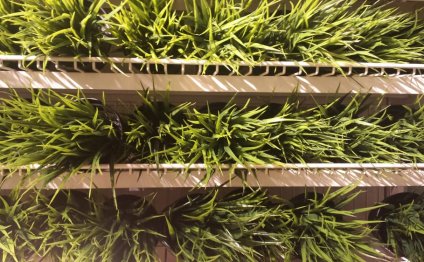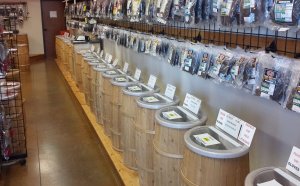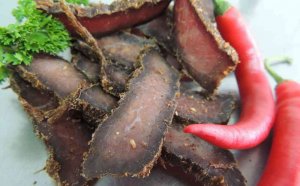
Selling Grass
 A recent survey informs us which grasses are best-sellers – and which may take advantage of somewhat marketing and advertising boost.
A recent survey informs us which grasses are best-sellers – and which may take advantage of somewhat marketing and advertising boost.
Feather reedgrass (Calamagrostis acutiflora) easily ranked due to the fact bestselling lawn in a current survey. Seen here is the cultivar ‘Karl Foerster’, known as Perennial Plant of the season in 2001 by the Perennial Plant Association.
IMAGES CURTESY OF MARY MEYER
When you look at the most recent Census of Horticultural Specialties, including information from 2009 and premiered in December 2010, ornamental grasses are reported with total sales – including retail and wholesale – of $124, 261, 000. The entire year 2003 was initial for the census to gather ornamental lawn product sales individually; that 12 months sales were $61, 213, 000. Not a poor growth spurt for a group of low-maintenance flowers.
But product sales could be greater, therefore at the beginning of 2011, I carried out an on-line survey of growers and merchants to:
- figure out what the best-selling lawn and sedges were;
- identify lawn research concerns; and
- determine what growers and stores experienced were the restrictive factors in selling even more grasses and sedges.
A 10-question, online Zoomerang study ended up being established through American Nurseryman “Sprout” e-newsletter; the Minnesota Nursery and Landscape Association’s member e-news; and particular e-mails to grass growers and merchants. An overall total of 37 growers or merchants taken care of immediately the review. Although this is a small number of responses, there exist few, if any, past surveys on grasses.
Best-selling grass
Needless to say, feather reedgrass (Calamagrostis acutiflora) was cited due to the fact best-selling grass, followed by maiden lawn (Miscanthus spp.) and fountain grass (Pennisetum spp.) Feather reedgrass is straightforward to propagate; a dense, lot lawn; establishes no seed – so seedlings and invasiveness are not issues – and folks love the appearance of it. It’s stiff, but sways using the piece of cake, and its own 4 to 5-foot level works well in lots of options. The cultivar ‘Karl Foerster’ was named Perennial of the Year in 2001 because of the Perennial Plant Association (PPA), the very first grass is because of the honor.
Despite self-seeding and invasiveness, miscanthus and pennisetum, two various other non-native grasses, tend to be preferences using public. Hakone grass (Hakonechloa macra), the PPA Perennial of the season for 2009, was detailed by two participants. Switchgrass (Panicum virgatum), small bluestem (Schizachyrium scoparium), and Wright’s dropseed (Sporobolus wrightii; also known as giant sacaton) had been the only U.S. indigenous grasses detailed as best-sellers. Truly, Sporobolus wrightii i'd not have guessed! Another strange best-seller posted ended up being Festuca subverticillata (nodding fescue). See Table 1 for certain reactions.
 Best-selling sedge
Best-selling sedge
Carex ‘Ice Dance’ and Carex ‘Evergold’ topped the best-selling sedge number, each with four reactions or 11 per cent; but eight men and women (22 %) reacted they do not offer sedges. (See dining table 2 for certain answers). Many different explanations were given for maybe not selling sedges: too hot and dry right here; sedges just develop in shade; cannot discover any to spread really in sun; an such like.
While going to the Internationale Stauden Union perennial plant seminar in Germany in 1998, I asked growers what their best-selling lawn ended up being. All of them replied: “Sedges, especially the smaller ones, employed for groundcovers.” Are we lacking prospective product sales in sedges? Countless sedges tend to be indigenous to the U.S., some of which tend to be species that vary commonly from Ca to Maine to Florida.
What restricts lawn sales?
Concern three of this review asked members that which was their particular biggest problem or restricting element in offering more grasses and sedges. The open-ended concern permitted regarding responses, that are compiled in Table 3. Although social needs regarding the grasses may be problematic (such as for example, should be reduce annually; bad look in early springtime for store sales, and so on), more people felt education had been the limiting aspect for extra sales. Most people will not appreciate or understand grasses and how to use all of them into the landscape. Company factors had been reported by 16 percent, and three participants believed invasiveness dilemmas were restricting grass product sales.
Research Priorities
Twenty-four % of the respondents into the study believed hardiness must certanly be a study concern. Sterility and plant evaluations were each mentioned by seven respondents, or 19 per cent. Six people cited specific cultural problems for analysis, and four others detailed brand new types or new plants become of primary significance. Answers towards open-ended concern – just what research should be carried out regarding grasses? – tend to be placed in dining table 4.
Whenever expected to speed four certain study subjects, participants ranked sterility, cool hardiness, and building brand new grasses or sedges the greatest, with 57 to 61 % mentioning these as the best, most critical projects. The 4th project, carrying out regional grass tests, ranked reduced, with 40 percent position this as the most readily useful study subject.
A number of participants commented on the dependence on even more grasses which are not invasive. Other remarks requested additional information on natives and much better indigenous cultivars, with great color and no accommodation.
Hakone lawn (Hakonechloa macra) garnered two ballots into the study of best-selling ornamental grasses
Exactly what did we discover?
In line with the outcomes of this study, ornamental grass product sales could benefit from increased public education on the best way to utilize grasses. The industry could also reap the benefits of home elevators sedges, because so many merchants or growers never appear to be attempting to sell these plants, although they have been remarkably popular in Europe. The difficulties of conquering exactly how grasses look in springtime can be overcome through the use of improved tags and advertising helps. Grouping grasses in combinations with appealing perennials could also make it possible to teach clients while increasing product sales.
All grasses, but specially native grasses, tend to be hard, low-maintenance plants that develop well with reduced inputs. It would appear that where and how to utilize grasses in a conventional landscape and garden are not popular or understood because of the public. Moreover it appears that gardeners would take advantage of being shown simple tips to include grasses into traditional landscapes, but still preserve appropriate, nice and attractive gardens. Show plantings at yard centers as well as in prominent community areas are extra methods for showcasing grasses.
Research priorities of establishing sterile, new grasses rated large with the business, and cool hardiness information, followed by local trials. Local grasses, particularly cultivars with colorful vegetation and good kind, had been mentioned to be really desirable for brand new introductions.
Share this Post
Related posts
Dallas Jerky
You have no items in your shopping cart. Spend $100 even more to receive FREE GROUND SHIPPING! Visit us these days! Totally…
Read MoreGerman Beef Jerky
By 10 on a brisk Saturday morning, the retro aluminum-lined glass butcher case within European Deluxe Sausage Kitchen is…
Read More










